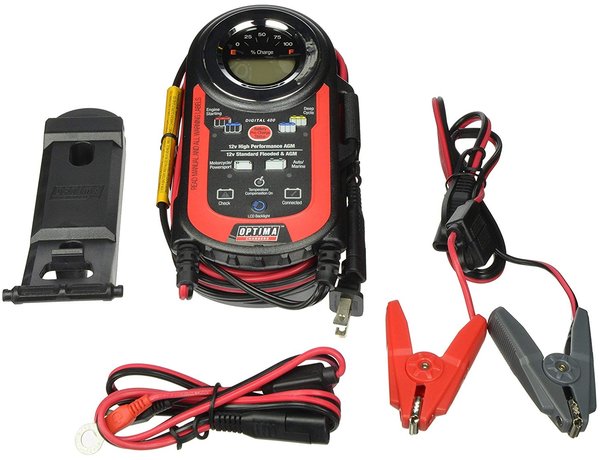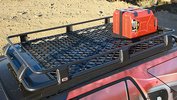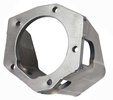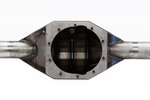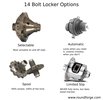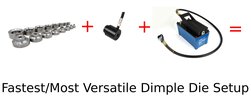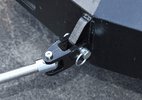How To Tell If Your Optima Battery Is Bad
Electrical tech is confusing! And when you think your battery is acting funny, it can be a real problem to figure out the cause.
Optima batteries are different from a traditional battery because of their construction, but you can still figure them out with a couple of tools.
In this article, we'll take a look at how to determine whether your Optima is bad, whether it's salvageable, and why you might need a special charger or traditional battery to recharge it.
- Find the Best Optima Battery Charger
- Which Optima Battery Is The Best For You?
- Jiggling your positive battery clamp (lightly!) and looking for white powder
- Jiggling your negative battery clamp (lightly!) and looking for white powder
- Checking your starter and main power feeds for tightness
- Checking your negative battery cable for tightness and corrosion
- Checking any grounding straps - these will often go from the engine block to the body and/or from the engine block to the frame. Sometimes they are bare wire.
- Excess sulfation
- An open cell
- Most of these chargers are automatic (they turn off when done)
- They can maintain your battery with a trickle charge when you want to store it
- They still work with regular, non-AGM batteries
- They have advanced functionality, like desulfation, a major battery killer
- a regular battery charger
- a battery that has been discharged to around 12.2 volts (could be a little more or less)
- jumper cables
- a multimeter
- Hook the Optima to the regular battery in parallel with the jumper cables. (positive to positive, negative to negative)
- Connect the charger to the regular battery and turn it on.
- Wait and hour and check the Optima. If it's hot to the touch or gassing out the vents, shut it down! The battery is no good. Warm to the touch is okay.
- At this point you're going to start checking the Optima's voltage frequently for the next hour. Once it reaches 10.5V on your multimeter, turn off the charger and disconnect the regular battery.
- Hook the Optima battery to the charger and charge as normal.
A Quick Word on Battery Expectations
Optima batteries work a lot like regular batteries with some added features. A dark-cased RedTop or BlueTop Optima is a starting battery.
Starting batteries are designed to be discharged a little, then be charged up fairly quickly by your charging system. Basically, the starter skims off some electricity from the battery for starting, and it's rapidly refilled once you start up.
A light-cased YellowTop or BlueTop Optima is a deep cycle battery.
Deep cycle batteries are designed to be discharged a lot, then charged up. In this case, a winch, a stereo, or an on-board 12V fridge scoops a lot of electricity from the battery, and then it's refilled by your charging system.
Make sure you choose the right Optima battery for what you need.
Tools You Need to Check Your Optima Battery
You're going to need a couple of things to check your Optima.
First, you need a multimeter or voltmeter. It needs to measure battery voltage, so you'll want to set it correctly. Most multimeters have a "20 VDC" position, and that's where you want to be.
Warning! You need to take fairly accurate readings of your Optima's voltage. We've found that some of the cheaper multimeters out there aren't always very accurate (like that free one from Harbor Freight) so keep that in mind if your readings are right on the edge of a zone.
It's helpful to have a vehicle so you can load test the battery, plus a helper.
Lastly, you should have a charger that charges AGM batteries. Many people don't know this, but a conventional battery charger won't work with an Optima battery that's discharged below 10.5V.
An alternative to an Optima-specific charger:
You can also use a regular battery charger with a regular battery to charge an Optima. Read more on that below.
Check the Little Things First
For some reason, many of us overcomplicate our solutions and diagnosis of problems (We do it here at Roundforge too!).
Before assuming your Optima has gone bad, check your battery connections for corrosion and tightness. This is probably one of the most common problem people have with batteries, but it's often not checked. This means:
Clean corrosion with sandpaper so that you connect to clean, bare metal. Use a wrench to make clamps and other connections reasonably tight (but not so tight that you damage a battery post!).
Bad connections and particularly bad grounds are one of the easiest problems to fix but often one of the last things that we check! Always check your connections first!
Test the Voltage First
Before you start, make sure your Optima is "charged". What we mean by this is that it should be in whatever state you think is charged, whether that means that it's been on a charger for a bit or that you just drove around for a while.
(The point here is that you didn't just pull the Optima out of your shed where it's been sitting for the last 6 months, or that you're not testing it after using it to power the disco ball at your neighbor's midnight rave party. We want the battery in a normal state.)
To begin, switch your multimeter to 20VDC or whatever will get your multimeter reading somewhere in the range of 12 volts DC.
Put the red probe on the positive Optima terminal and the black probe on the negative Optima terminal.
This is your first reading - here's how to interpret it:
12.7 - 13.2 volts - NORMAL with 100% charge
Anything in this range means that you have normal charge and you're in the right range for an Optima.
12.0-12.4 volts - LOW with 25-75% charge
If your Optima is in this range and you think it should be charged, it's not taking or not holding a charge. This usually means that your battery is sulfated, which happens when it sits for a long time (not charging) or is deeply discharged when it shouldn't be. Or it's just old.
0-11.9 volts - DISCHARGED
This is highly discharged but usually still recoverable. 0 volts usually means that you've got a short somewhere in the battery - it'll need to be replaced. If it's reading a low voltage, it's probably sulfated and probably needs replacement.
Load Test Your Optima Battery
If your Optima's voltage is okay, it still might not perform well under load. You can load test it by going to an auto parts store (they all have battery testers nowadays) or do it yourself with a multimeter.
We load test it by hooking it up to a vehicle and checking the voltage while running the starter. Here's what to do:
Like before, your multimeter will be set to 20VDC, or whatever gets you in that 12 volt DC range.
Touch the red probe to the positive terminal on the Optima and touch the black probe to the negative Optima terminal.
Then have a helper try to start your 4x4. (Tip: If we're solo, we put the multimeter on the windshield and use long alligator clips to reach the battery.)
Watch the multimeter as the starter motor is turning, not when you're started up!
The voltage on your Optima should read 9.5-10.5 volts for at least 30 seconds.
When the starter motor is turning over the engine, that is the heavy load we're using to see how the battery performs. Once started, the alternator will start push the voltage up - we aren't interested in alternator voltage since that tells you about charging, not the condition of your Optima.
If the voltage doesn't hold at 9.5-10.5 volts for 30 seconds, it means your battery is toast. This is usually one of two things:
The reason an open cell looks okay in no-load testing your Optima is heat:
A warm battery can expand inside and things that should touch don't touch anymore. Similarly, terminal contacts can break or crack internally. When cold, they may touch and flow current, but when they warm up they break contact.
Recharging a Dead Optima
Normal chargers won't always work with an Optima battery. It depends a lot on how deeply it's been discharged.
The reason for this is simple - Optimas are AGM batteries and AGMs have a very low internal resistance. The low internal resistance allows them to put out a lot of electricity and be discharged more than a regular battery. (Although repeated discharging a dark-cased RedTop or BlueTop is not good for longevity).
When a regular battery charger is hooked up to an Optima, it often won't even turn on - while the Optima could be charged, the charger thinks it's totally kaput (like a regular battery would be) and doesn't even come on. This usually happens when the Optima measures around 10.5 volts.
How do you fix this? You have two options:
Use an AGM-Compatible Charger For Your Optima
If you buy a charger for AGM batteries, it's easy to charge up a dead AGM. You hook it up and go. There are some additional benefits:
This is the easiest way to charge or maintain an AGM battery like an Optima.
Trick Your "Standard" Charger With Another Battery
If you don't want to buy an AGM charger, no problem. You can DIY a charging setup in a pinch. Here's what you need:
The general concept here is that you charge the discharged "regular" battery with the battery charger, but you also hook up the Optima to piggyback on the regular battery.
What we're doing is this:
The charger sees the voltage in the Optima as too low to charge. The regular battery has a higher voltage, but still needs to be charged - the charger will want it to be at least 12.7 volts. This is not too low to charge, so the charger will turn on and flow current.
By attaching the Optima to the regular battery, we can draw off some current to charge the Optima.
The goal here is to get the Optima up to 10.5 volts, then hook it directly to your charger.
Here's how to do it:
The process to get to 10.5 V should not take more than a 2 hours.
Last updated: March 26, 2020
